Nature’s solutions to climate change: Part 2 - algae
As 2023 is declared the warmest year on record and Australia endured another summer of extreme weather, scientists share some of nature’s solutions to mitigating the effects of an increasingly warmer climate in this four-part series.
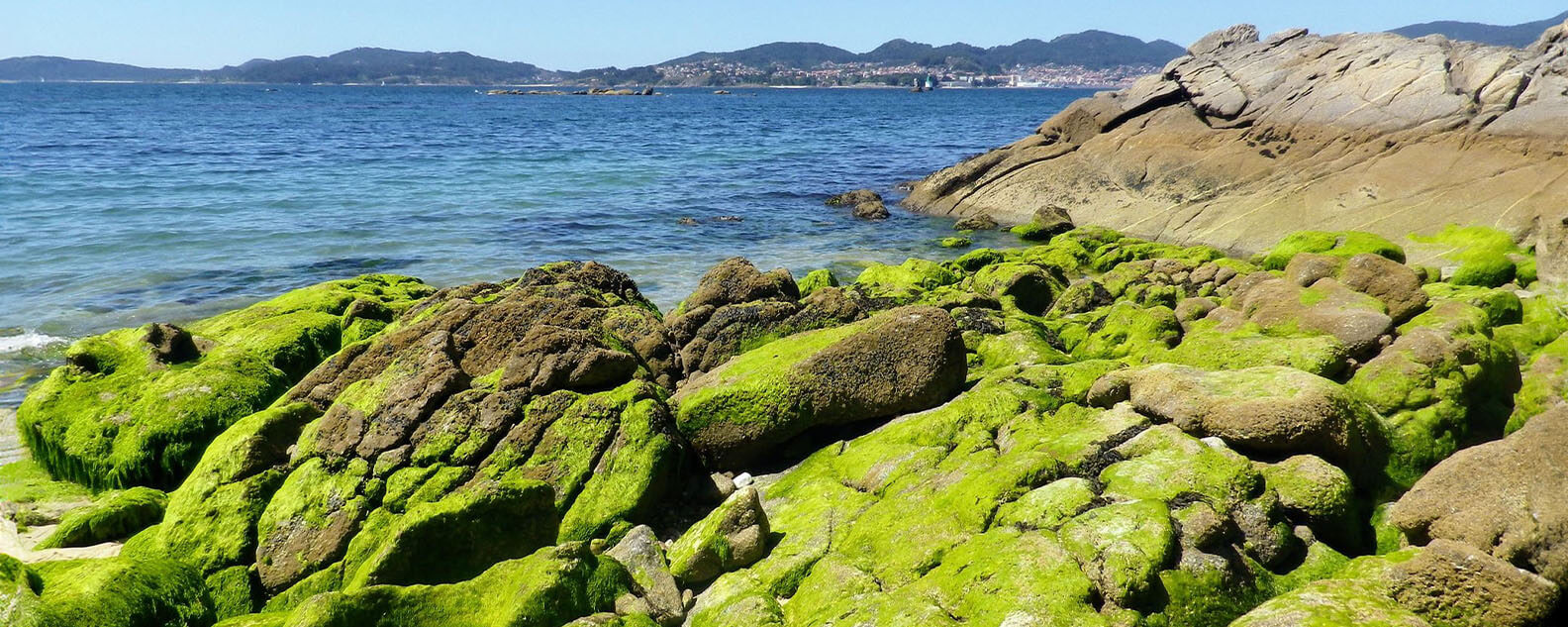
Algae in our oceans
The second story in our three-part series has been adapted from a 2023 National Science Week presentation at the Royal Botanic Garden Sydney by Associate Professor Katherina Petrou. Associate Professor Petrou works at the University of Technology Sydney, studying microalgae and its responses to global warming and the acidification of our oceans.
An increasingly blue planet
Our planet is blue and getting much bluer. Most of Earth’s surface is covered by oceans and this area is expanding as atmospheric concentrations of CO2 increase, the planet warms, and our oceans rise.
As Earth warms, so too do our oceans. They've absorbed 40% of all the warming that our planet has experienced over the last 30 years, threatening marine life and the way oceans function.
Since the industrial revolution, our oceans have also absorbed 30% of all human-caused CO2 emissions, which has changed the pH of the ocean, turning it more acidic. It's projected that by the end of this century there'll be a 170% increase in hydrogen ions in our ocean – meaning the pH will continue to decline, becoming more acidic and putting marine life further at risk.
“I came across a beautiful picture drawn by nine-year-old Trishia from Maharashtra in India, depicting the lungs of the earth. What I loved about her drawing, is that her planet has two lungs, one green, the other blue, and she writes that ‘without both, we cannot survive’,” Associate Professor Petrou said.
“Our oceans provide 50-80% of the oxygen we breathe from photosynthetic algae that inhabit the surface, a fact not commonly acknowledged." – Associate Professor Katherina Petrou
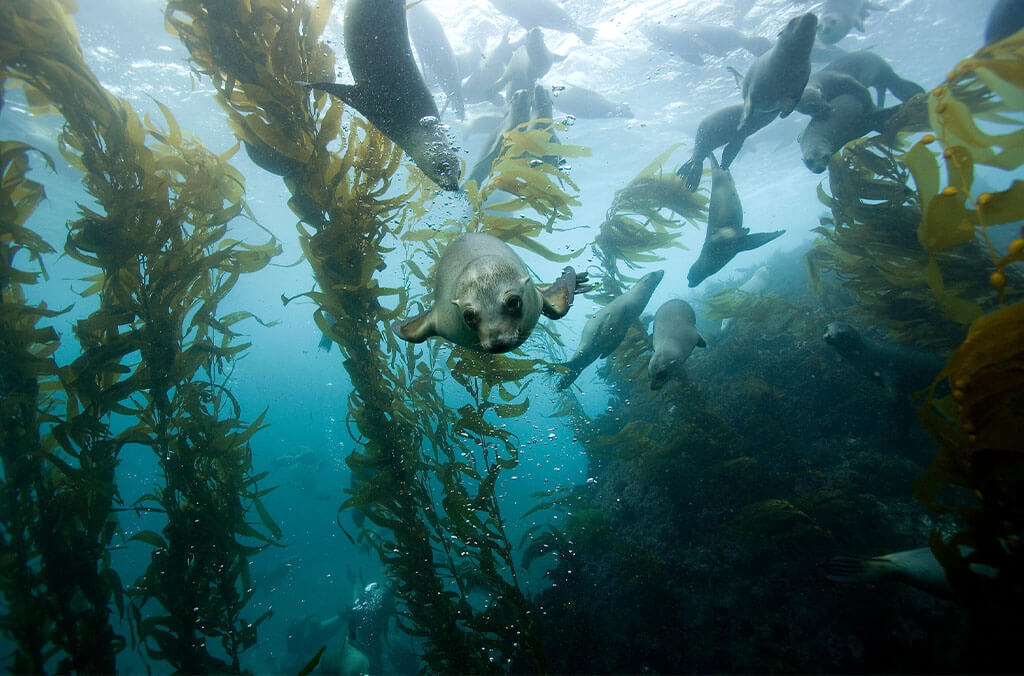
Group of California sea lions (Zalophus californianus) swimming in a kelp forest (Macrocystis pyrifera).
What IS algae?
Algae include the familiar seaweeds we see on the shore and the kelp forests anchored to our shallow ocean floors, but also tiny, microscopic organisms, that are invisible to us. These algae inhabit the upper layers of our oceans and harness the energy from sunlight to capture carbon dioxide and turn it into sugars.
Our oceans are home to more than 50% of all species on the planet and algae are the primary source of food sustaining all marine life. Algae therefore help provide food for the three billion people who depend on seafood as their primary source of protein.
One group of algae, known as diatoms, are a major phytoplankton group in our oceans. Diatoms are unique, because they take up silica from the seawater and deposit it as a shell, creating beautiful architectural structures of silica dioxide, which is essentially glass.
These glass shells make diatoms heavier than seawater helping them sink. This means that all the carbon they fix from the atmosphere through photosynthesis, is trapped in the cells and transported with them as they sink deep into the ocean. This form of carbon sequestration is an important one.
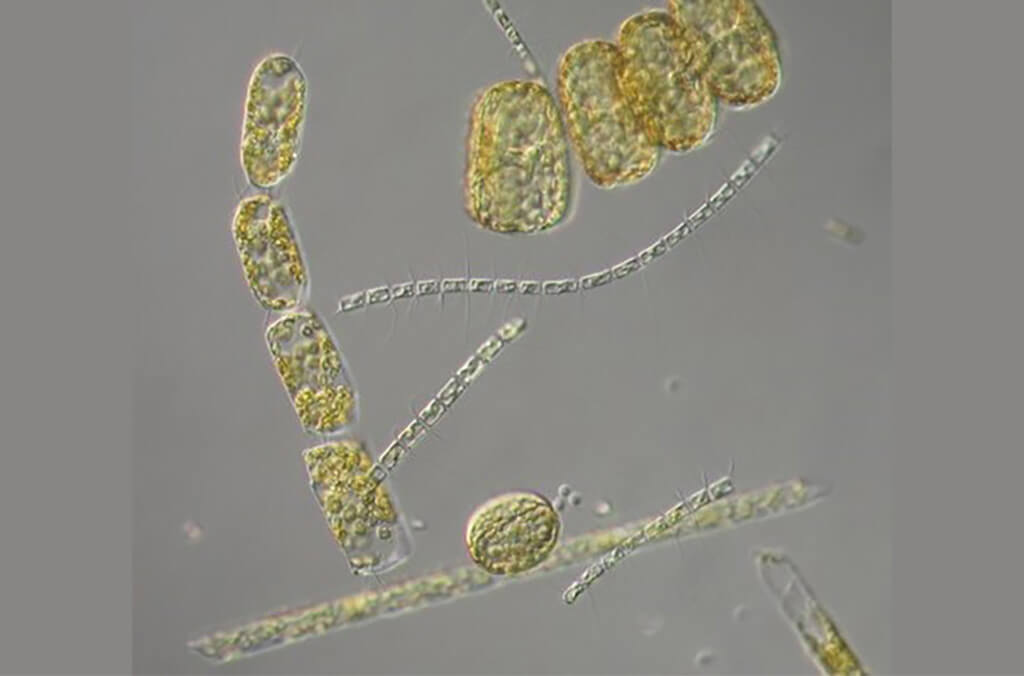
Microscope image of Antarctic diatoms (Phytomix). Credit: Associate Professor Katherina Petrou from the northern hemisphere are one of the biggest exotic species under threat from extreme heat
A micro-sized solution
There are many exciting algae-based solutions for reducing emissions and the impacts of climate change.
Seaweed farms have been around for hundreds of years for food production, but now, they're being used to produce stock feed. It’s been shown that cattle fed on macroalage have much lower methane emissions. Seaweeds are also being used as more sustainable forms of fertiliser, and microalgae are being used in the production of biofuels, hydrogen, pharmaceuticals, and nutraceuticals.
They’re even being used in material production with algae being used in the production of bioplastics, textiles, and building materials to construct more sustainable buildings to replace fossil fuel derived products.
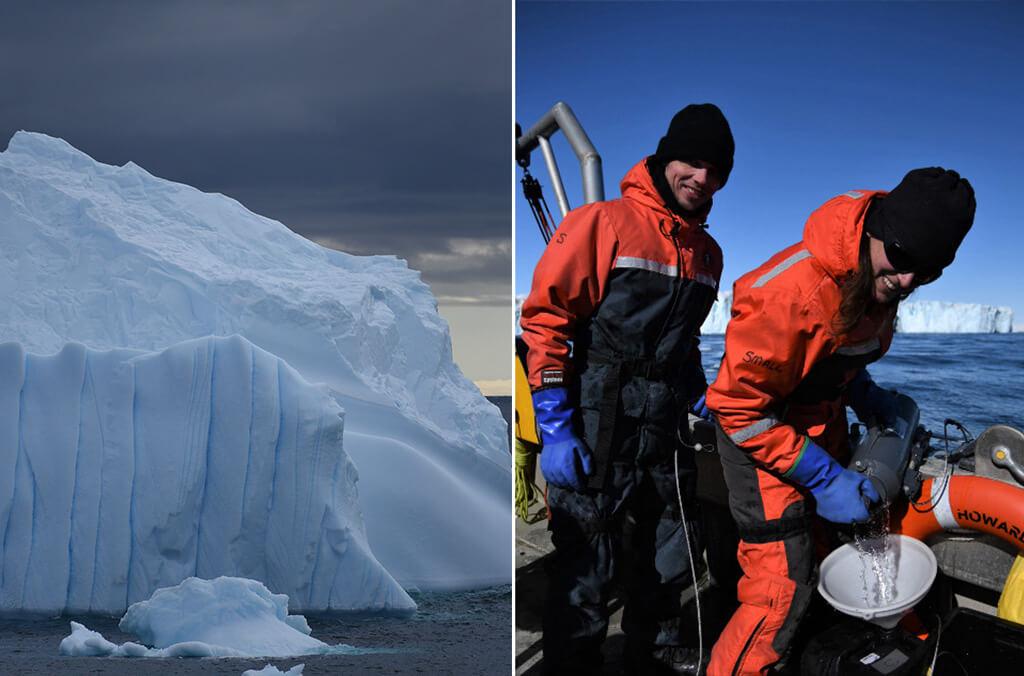
Dr Fernandez and Dr Nielsen sampling the waters off the Sørsdal glacier in East Antarctica. Credit: L: Pedro Szekely/Flickr, R: Associate Professor Katherina Petrou
The blue future
Associate Professor Petrou’s work looks at how climate change is affecting phytoplankton at the cellular level, and in turn, how that is scaled up to affect ocean systems. This helps ocean and climate modellers assess how the marine ecosystem will respond to further warming.
On a research trip to Davis Station in Antarctica part of an Australian Antarctic program, Petrou and her team used mesocosms, which are 600 litre vats used to hold coastal seawater to test the effects of increasing carbon dioxide on the phytoplankton community . They looked at a range of carbon dioxide levels, from present day to the end of this century and beyond.
“One of the things I wanted to find out was, does high carbon dioxide affect diatoms’ ability to produce their silica shells?” Associate Professor Petrou said.
“What we found, unexpectedly, was that diatom silica declined with increased ocean acidity (higher carbon dioxide). The evidence suggests that we’re going to see a severe and significant drop in silica production by Antarctic diatoms well before we reach the end of the century, she said.
As mentioned above - diatoms capture carbon and with silica production, they make themselves heavy, and sink. If they start to produce less silica, they won’t become as dense and they won’t be able to draw that captured carbon down into the deep ocean as effectively.
“We can only predict the outcomes of this will be disastrous not only for our marine life, but for our blue planet," she said.
“To help combat climate change and reduce the negative impact from emissions, we need to look towards the varied and numerous solutions, such as those offered by algae. In this way, we can start to actively pave the way for a greener, brighter future.
“I’m always amazed at how something invisible and microscopic can have such an essential role to play in our planet’s wellbeing,” she said.
Related stories
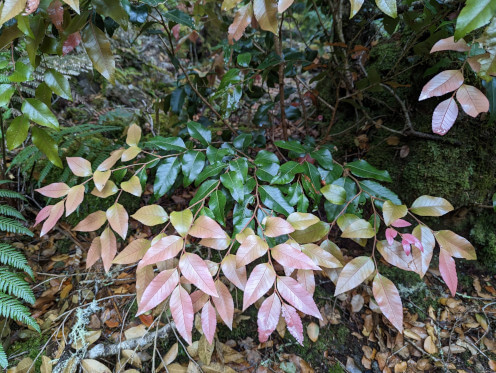
For the team at the Research Centre for Ecosystem Resilience (ReCER), a request from the Blue Mountains Botanic Garden to design a hedge of the towering Nothofagus moorei, or Antarctic beech, sparked a unique collaboration between science and horticulture.
In the lower Hunter Valley, a new nature reserve named Tiraki – Wonnarua for ironbark – has become a sanctuary for one of Australia’s rarest plants.
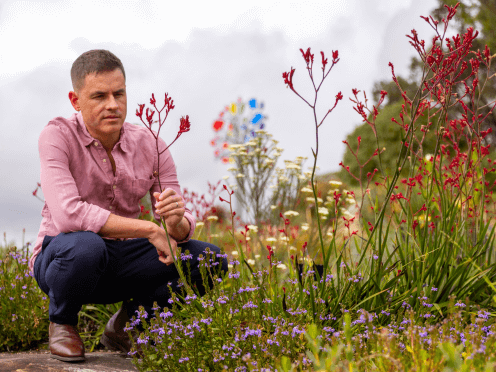
In this new episode of What the Flora!? discover why this world-first global ‘Tree of Life’ study is a new milestone in understanding the evolutionary history of flowering plants.